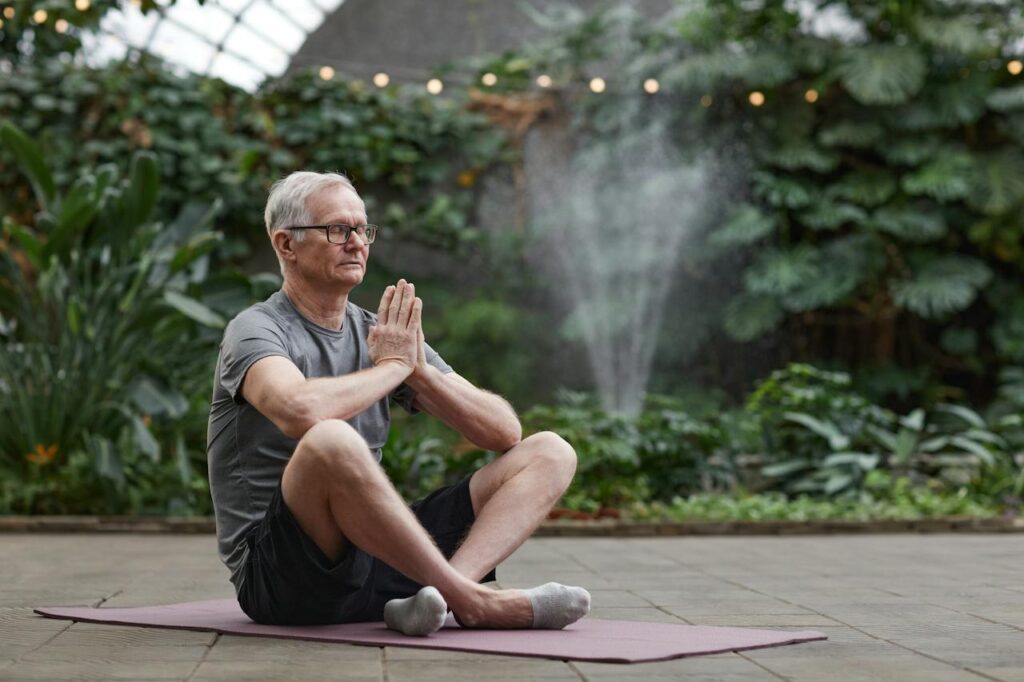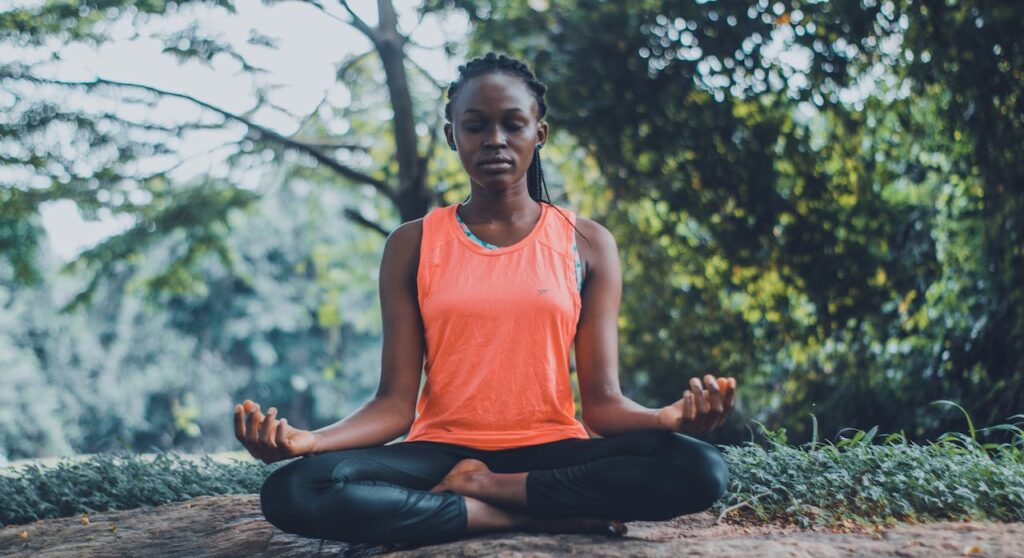
Vipassana Meditation:Cultivating Wisdom and Compassion
Dive into the depths of your consciousness with Vipassana Meditation. Cultivate clarity of mind, cultivate compassion, and integrate mindfulness into your daily life. Begin your journey towards inner peace and self-discovery now!
Introduction to Vipassana Meditation
Understanding the Origins and Philosophy of Vipassana Meditation, which originated in ancient India, traces its roots back to the teachings of Siddhartha Gautama, commonly known as the Buddha. The term “Vipassana” means insight or clear seeing, emphasizing observing the true nature of reality. This meditation technique is deeply intertwined with Buddhist philosophy, aiming to cultivate mindfulness, wisdom, and liberation from suffering.
Exploring the Core Principles Several fundamental principles lie at the heart of Vipassana Meditation. These include impermanence (Anicca), the understanding that all things are subject to change; suffering (Dukkha), recognizing the inherent dissatisfaction in worldly existence; and non-self (Anatta), the realization that there is no permanent, unchanging self. By embracing these principles, practitioners develop a deeper understanding of the nature of existence and attain profound insights into the human condition.
Benefits of Practicing Vipassana Meditation The practice of Vipassana Meditation offers a myriad of benefits for both mental and physical well-being. From reducing stress and anxiety to enhancing emotional resilience and improving concentration, the benefits extend beyond the meditation cushion into everyday life. Additionally, Vipassana fosters self-awareness and introspection, leading to greater clarity of mind and a more profound sense of inner peace.
Getting Started with Vipassana Meditation
Setting the Right Intentions Before embarking on the journey of Vipassana Meditation, it’s essential to set clear intentions. Reflect on your reasons for practicing and establish realistic goals. Whether you seek personal transformation, spiritual growth, or simply a way to alleviate stress, clarifying your intentions can provide direction and motivation for your practice.
Creating a Suitable Environment Creating a conducive environment for meditation can significantly enhance your practice. Find a quiet, comfortable space free from distractions where you can sit undisturbed. Consider incorporating soft lighting, soothing music, or natural sounds to cultivate a sense of tranquility. Creating a dedicated meditation space can reinforce the habit and signal your mind that it’s time for introspection.
Preparing Yourself Mentally and Physically: Preparing yourself mentally and physically is crucial for a fruitful meditation session. Begin by adopting a relaxed yet alert posture, ensuring your spine is straight. Take a few moments to release any tension in your body and settle into a state of ease. Mentally, cultivate an open and curious mindset, free from judgment or expectation. Approach each meditation session with curiosity and receptivity, allowing whatever arises to be observed without attachment.

The Practice of Vipassana Meditation
Posture and Positioning for Meditation The proper posture and positioning are foundational to Vipassana Meditation. Find a comfortable seated position with your back straight and shoulders relaxed. You can sit cross-legged on the floor or a cushion or sit on a chair with your feet flat on the ground. The key is to maintain a stable and upright posture that simultaneously allows for alertness and relaxation.
Breath Awareness Techniques Breath awareness is a cornerstone of Vipassana Meditation, anchoring your attention in the present moment. Begin by bringing your awareness to the natural rhythm of your breath, observing the sensations as you inhale and exhale. Notice the rise and fall of your abdomen or the sensation of air passing through your nostrils. Whenever your mind wanders, gently guide your attention back to the breath, cultivating a sense of calm and focus.
Mindfulness of Sensations and Emotions In addition to breath awareness, Vipassana Meditation involves cultivating mindfulness of sensations and emotions. Bring awareness to the various sensations present in your body, whether pleasant, unpleasant, or neutral. Observe these sensations with curiosity and detachment, recognizing their impermanent nature. Similarly, become aware of any emotions or mental states during meditation, allowing them to be acknowledged without identification or judgment. Through continuous practice, you’ll develop greater insight into the ever-changing nature of your inner experience.
Overcoming Challenges in Vipassana Meditation
Dealing with Restlessness and Distractions
- Recognize the nature of the mind: Understand that restlessness and distractions are everyday experiences during meditation.
- Cultivate mindfulness: Bring awareness to the present moment, gently guiding your focus back to the breath or meditation object when distractions arise.
- Practice patience: Accept the presence of restlessness without judgment, knowing that it will diminish with consistent practice.
- Experiment with techniques: Try meditation methods, such as counting breaths or body scanning, to anchor your attention.
Managing Physical Discomfort
- Establish proper posture: Sit comfortably with an upright spine to minimize physical strain during meditation.
- Release tension: Scan your body for areas of tension and consciously relax them, allowing the body to settle into a state of ease.
- Use props if necessary: Support your posture with cushions or a meditation bench to alleviate discomfort in the hips, knees, or back.
- Take breaks when needed: If discomfort becomes overwhelming, gently transition into a different posture or gently stretch to relieve tension.
Navigating Mental Obstacles
- Practice self-compassion: Be kind and patient with yourself as you encounter challenges in meditation, understanding that they are part of the learning process.
- Cultivate curiosity: Approach mental obstacles with a sense of inquiry, exploring the underlying thoughts and emotions that arise.
- Seek guidance: Consult with experienced meditators or teachers for advice on navigating specific mental hindrances such as doubt, boredom, or aversion.
- Develop resilience: Build mental resilience through consistent practice, gradually learning to observe and let go of negative thought patterns.

Deepening Your Vipassana Practice
Incorporating Walking Meditation
- Embrace movement: Explore the practice of walking meditation as a complement to seated meditation, allowing for a different mode of mindfulness.
- Focus on sensations: Pay attention to the sensations of each step, grounding yourself in the present moment as you walk slowly and deliberately.
- Connect with nature: Practice walking meditation outdoors, immersing yourself in the sights, sounds, and textures of the natural environment.
- Integrate mindfulness: Extend mindfulness beyond formal meditation sessions by incorporating walking meditation into your daily routine, such as during a morning stroll or lunch break.
Cultivating Loving-Kindness (Metta)
- Cultivate compassion: Cultivate a sense of loving-kindness towards yourself and others, recognizing all beings’ inherent worth and dignity.
- Practice loving-kindness meditation: Engage in guided or silent meditation practices focused on generating feelings of goodwill, compassion, and empathy.
- Extend loving-kindness to all beings: Cultivate a sense of interconnectedness by offering loving-kindness to friends, family, strangers, and even tricky individuals.
- Integrate loving-kindness into daily life: Express kindness and compassion in your thoughts, words, and actions, fostering harmony and connection in your relationships and communities.
Integrating Mindfulness into Daily Life
- Cultivate present moment awareness: Bring mindfulness to everyday activities such as eating, walking, or washing dishes, savoring each moment with full attention.
- Use mindfulness reminders: Set reminders or cues throughout the day to prompt moments of mindfulness, such as a bell or a mindful breathing exercise.
- Practice informal mindfulness: Take opportunities to pause and check in with yourself throughout the day, observing your thoughts, emotions, and sensations without judgment.
- Embrace imperfection: Accept that mindfulness is a lifelong practice, and allow yourself grace as you navigate the ups and downs of daily life with greater awareness.

The Role of Community and Support
Joining Vipassana Retreats and Centers
- Immerse Yourself: Vipassana retreats offer a profound opportunity to deepen your practice in a supportive environment.
- Expert Guidance: Learn directly from experienced teachers who can provide personalized instruction and guidance.
- Community Connection: Connect with like-minded individuals who share your dedication to Vipassana meditation, fostering a sense of camaraderie and mutual support.
Finding Guidance from Experienced Practitioners
- Mentorship: Seek out experienced practitioners who can offer insights and advice based on their meditation journey.
- One-on-One Sessions: Benefit from individualized guidance tailored to your needs and challenges.
- Online Resources: Utilize online forums, blogs, and videos created by seasoned Vipassana practitioners to expand your understanding and receive support outside traditional settings.
Building a Supportive Practice Community
- Group Meditation: Participate in group meditation sessions to enhance your practice and cultivate a sense of unity with fellow practitioners.
- Peer Support: Share experiences, struggles, and triumphs with others on the same path, fostering encouragement and accountability.
- Social Events: Engage in social activities and gatherings organized by Vipassana communities to strengthen bonds and nourish your spiritual journey.
Maintaining Consistency and Progress
Establishing a Regular Meditation Routine
- Consistency is Key: Commit to a daily meditation practice, setting aside a specific time and space for your sessions.
- Start Small: Begin with manageable meditation durations and gradually increase as your practice strengthens.
- Accountability Partners: Partner with a friend or family member to hold each other accountable and provide motivation to stick to your routine.
Tracking Progress and Celebrating Milestones
- Journaling: Keep a meditation journal to track your progress, noting insights, challenges, and breakthroughs.
- Milestone Markers: Set achievable goals and celebrate milestones reached, whether it’s increased focus, heightened awareness, or moments of deep tranquility.
- Self-Reflection: Reflect on how your practice has evolved, acknowledging the growth and transformation you’ve experienced.
Adapting Your Practice as You Grow
- Flexibility: Recognize that your meditation practice may evolve and change as you progress, and be open to adjusting your approach accordingly.
- You are exploring Variations: Experiment with different meditation techniques and styles to find what resonates best with you at each stage of your journey.
- Seeking Guidance: Consult with experienced practitioners or teachers if you encounter obstacles or feel stagnant in your practice, seeking advice on adapting and revitalizing your meditation routine.

Frequently Asked Questions (FAQs) about Vipassana Meditation
Addressing Common Misconceptions
- Dispelling Myths: Clarify misconceptions surrounding Vipassana meditation, such as its religious affiliations, difficulty level, or required time commitment.
- Providing Clarity: Explain Vipassana principles and practices to demystify the meditation technique and make it more accessible to beginners.
Clarifying Doubts and Concerns
- Addressing Skepticism: Acknowledge common doubts and concerns that newcomers may have about Vipassana meditation, such as its effectiveness or relevance to modern life.
- Offering Reassurance: Provide evidence-based insights and testimonials from practitioners to reassure skeptics and inspire confidence in the practice’s potential benefits.
Offering Practical Tips for Beginners
- Getting Started: Offer practical advice and tips for beginners embarking on their Vipassana meditation journey, including how to establish a conducive meditation environment, overcome common challenges, and stay motivated.
- Cultivating Patience: Emphasize the importance of patience and perseverance in meditation, reassuring beginners that progress takes time and consistent effort.
- Encouraging Self-Compassion: Remind beginners to approach their meditation practice with self-compassion and kindness, accepting their experiences without judgment and embracing the learning process.
Final words: Embracing Inner Transformation through Vipassana Meditation
Embarking on the journey of Vipassana Meditation is akin to stepping into a profound realm of self-discovery and inner transformation. As practitioners delve into the depths of their consciousness through mindfulness and introspection, they unlock a treasure trove of insights and wisdom. Here, we summarize the essence of this transformative practice and its profound impact on individuals’ lives:
- Rediscovery of Inner Peace: Vipassana Meditation serves as a pathway to rediscovering the inherent peace within each individual. By observing the fluctuations of the mind and developing a deep awareness of sensations and emotions, practitioners cultivate a sense of tranquility that permeates every aspect of their being.
- Clarity and Insight: Through sustained practice, Vipassana meditators develop clarity of mind and gain profound insights into the nature of reality. By observing phenomena’ impermanent and ever-changing nature, they begin to unravel the mysteries of existence and acquire a deeper understanding of themselves and the world around them.
- Transformation of Suffering: Vipassana Meditation offers a powerful tool for transforming suffering and cultivating resilience in facing life’s challenges. By developing stability and learning to observe pain and discomfort with detachment, practitioners can navigate life’s ups and downs with grace and resilience.
- Cultivation of Compassion and Kindness: As practitioners deepen their practice, they naturally cultivate compassion, kindness, and empathy towards themselves and others. By recognizing the interconnectedness of all beings and cultivating loving-kindness (Metta), they contribute to creating a more harmonious and compassionate world.
- Integration into Daily Life: The insights and benefits derived from Vipassana Meditation extend far beyond the meditation cushion, permeating every aspect of daily life. Practitioners learn to bring mindfulness and presence into their interactions, relationships, and activities, leading to greater clarity, authenticity, and fulfillment.
In conclusion, Vipassana Meditation offers a transformative path to self-discovery, inner peace, and profound insight. By embracing this ancient practice with dedication and sincerity, individuals embark on a journey of inner transformation that enriches their lives and the lives of those around them. Cultivating mindfulness, compassion, and wisdom creates a more peaceful and compassionate world for ourselves and future generations. Embrace the transformative power of Vipassana Meditation and unlock the boundless potential that lies within.
- Discover Top Stories
- Hatha Yoga Mastery: What Defines It?
- Energy Healing Insight
- Sound Healing Wonders: Soothing Resonance
- Meditation Retreats Near Me: Reconnect With Peace
- Spirited Awakening: Deep Spiritual Exploration
- Spiritualism: Journey Within
- Starter Yoga For Beginners
- Sacred Plant Medicine: For Holistic Health
- Sacred Plant Secrets: Exploring Nature’s Divine Gifts
